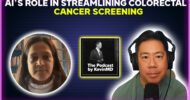by Sunjay Devarajan
“Mrs. Adams” slowly ambled into the family medicine clinic on a Wednesday afternoon. I immediately noticed her slight hunch as she made her way into the lobby.
“A case of back pain?” I thought to myself. “Perhaps an exacerbation of the scoliosis she’d had since childhood?” I shrugged my shoulders and carried on with my day, flipping through a few more charts. Just another patient. When the time came, I strolled into the lobby, her chart in hand.
With a booming tone, I called her name. Mrs. Adams arose from her chair. I looked down at her chart and noted that she was 62 years old and did not carry health insurance. I turned my eyes back towards her approaching figure. I tried, but could not give her the ready, welcoming smile for which I was known. My heart sank. Only the blind could have missed the melancholy in her eyes. It was evident that she was suffering; perhaps something catastrophic had happened to her? Potential scenarios flashed through my mind. It took me a second to catch myself, and I jerked out my hand to introduce myself as a third-year medical student. Mrs. Adams attempted a smile. “A pleasure to meet you,” she softly said.
As I led her into the room, I did a quick mental review of the standardized patient history. “First, get her chief complaint and history, then move on to pertinent positives and negatives. Be systematic!” I thought to myself. I turned to close the door, and by the time I came back around, she had seated herself.
“So what can I do for you today, ma’am?” I asked.
“Well, I really don’t know if there’s anything you can do for me. I just needed someone to talk to,” she replied.
Puzzled, I continued without hesitation. “Why don’t you tell me about what’s going on.”
“Well…” She paused for a moment and cleared her throat. “It’s my son. I buried him yesterday. He was shot and killed almost a week ago…and… I just haven’t been able to sleep since.” She choked on these words as a tear rolled down the right side of her face.
I froze. I didn’t know what to say. The old familiar lump in the throat jammed itself squarely in place, and my face became hot. After gathering my thoughts, I awkwardly scrambled into the seat next to her. Like a reflex, her face planted itself onto my shoulder. My white coat was wet with her tears. I could hear her muffled voice as I consoled her. “I just needed someone to talk to.”
For the next hour, I sat with Mrs. Adams. We discussed how she might cope with this disaster, mulling over the tragedy of a mother having to bury her child. Adding to her grief, she spent $600 on the burial and had wiped out her savings. I inquired about any family nearby that she might be able to stay with. She needed her loved ones to get through this. I asked about her faith and suggested that she lean on it to help her survive these harsh times. With glazed eyes, she nodded politely to my suggestions, frequently stopping to wipe away her tears. She seemed intent on listening rather than speaking. My attending entered the room, and he too did his best to reassure her that everything would be okay. Before he departed, he motioned me to follow him outside into the hall. When I closed the door behind me, he told me something that I will never forget:
“Stay with her as long as she needs you. No medicine needed here. Just be her pillar. That is her treatment.” But there was one last thing. “When you’re done, be sure to tell the front desk not to worry about the bill. I don’t feel right about charging her for this.” He walked off. Yet another shining moment in the primary care setting.
The transformation of medicine into a profit-driven business is the biggest threat that we face in health care. Within this realm, a patient’s socioeconomic status is quickly becoming the most significant barrier in determining the practice of humanistic care.
We have reached a tipping point in which a vast number of physicians have been forced to prioritize their patient load, based not upon their ability to treat a patient, but on the level of reimbursement they will receive for treating that patient. In short, it’s all about money. The situation is especially precarious for physicians in private practice when taking on a new patient. Before they can even offer care, they must contemplate a number of logistical questions: What insurance is this person under, if any? Is it Medicare or Medicaid? Would I financially be better off if I kept this timeslot open for someone with private insurance? Can I squeeze this patient in even if I can only give them ten minutes?
In the midst of this cluster of considerations, the humanistic principles that once inspired physicians to pursue medicine are slowly losing ground to the temptations of the business mindset. This progression will continue unless we, as current and future physicians, mount a collective stance against it.
In the classroom, I have been instructed endlessly to practice humanistic patient care, but I needed an experience to understand what that truly meant. My encounter with Mrs. Adams taught me that being a physician is not just about medicine. It is the art of healing the human spirit, body, and mind. No matter what anyone says, medicine cannot be a business. It cannot be a profit-driven scheme. It cannot be determined by the insurance a patient carries. It is a noble profession with admirable objectives. At its core is humanism, which I define as the language of the conscience. Throughout history, the human conscience has always been a mighty force against the injustices imposed by barriers. I hope that physicians will band together, tear down these economic barriers, devise workable solutions, and practice medicine the way we originally intended to practice.
Sunjay Devarajan is a medical student.
Submit a guest post and be heard on social media’s leading physician voice.













![Supporting medical resident families [PODCAST]](https://www.kevinmd.com/wp-content/uploads/Supporting-medical-resident-families-190x100.jpg)


![Working patients and health care [PODCAST]](https://www.kevinmd.com/wp-content/uploads/Working-patients-and-health-care-190x100.jpg)


